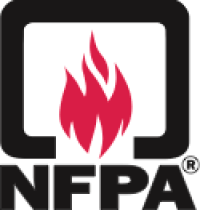May 1, 2013 – Electrical fires remain one of the top causes of home structure fires, according to a new report by the National Fire Protection Association (NFPA). The Home Electrical Fires report estimates that an electrical failure or malfunction factored in 45,000 to 55,000 home structure fires reported to the U.S. fire departments every year since 2000.
These fires, which account for 13 percent of total home structure fires, resulted in annual losses of 455 civilian deaths, 1,500 civilian injuries and $1.5 billion in direct property damage during 2007-2011. Any type of equipment that uses electrical power can have an electrical failure or malfunction. Electrical distribution or lighting equipment accounted for 48 percent of home electrical fires in 2007-2011. Arcing appears to account for most home electrical fires, outnumbering overheating by at least 2-to-1 and as much as 7-to-1.
NFPA is marking National Electrical Safety Month (May) by reminding the public to be aware of the risks associated with the use of electricity, and providing safety tips and information to assist individuals in taking steps to reduce the risk of home electrical fires.
Other key findings in the report have to do specifically with home structure fires involving electrical distribution or lighting equipment, including:
- 63 percent involved wiring and related equipment.
- 74 percent cited some type of electrical failure or malfunction.
- Nearly half (44 percent) of civilian deaths were caused by fires that began in the bedroom, living room, family room, or den.
- Wire or cable insulation was the item first ignited in 32 percent of electrical distribution or lighting equipment home structure fires.
“Electrical fires are a risk that homeowners should bear in mind when reviewing fire dangers,” says Lorraine Carli, NFPA’s vice president of communications. “By taking early action to eliminate electrical hazards in your household and following safety guidelines, the chances of having a home electrical fire can be significantly reduced.”
NFPA is offering the following electrical safety tips:
- Replace damaged or loose electrical cords.
- Avoid running extension cords across doorways or under carpets.
- In homes with small children, make sure your home has tamper-resistant (TR) receptacles.
- Consider having additional circuits or outlets added by a qualified electrician so you do not have to use extension cords.
- Follow the manufacturer’s instructions for plugging an appliance into a receptacle outlet.
- Avoid overloading outlets. Plug only one high-wattage appliance into each receptacle outlet at a time.
- If outlets or switches feel warm, frequent problems with blowing fuses or tripping circuits, or flickering or dimming lights, call a qualified electrician.
- Place lamps on level surfaces, away from things that can burn and use bulbs that match the lamp’s recommended wattage.
- Make sure your home has ground fault circuit interrupters (GFCIs) in the kitchen, bathroom(s), laundry, basement, and outdoor areas.
- Arc-fault circuit interrupters (AFCIs) should be installed in your home to protect electrical outlets.
- When you are buying, selling, or remodeling a home, have it inspected by a qualified electrician.
NFPA has been the developer and publisher of NFPA 70®, National Electrical Code® (NEC) since 1911. The NEC continues to be the most widely used code for the built environment in the world, establishing the standard for safe electrical installations. The code has been adopted in almost every state in the U.S., in many territories, and in several countries. The 2014 Edition of the NEC will be available in fall 2013.
About the National Fire Protection Association (NFPA)NFPA is a worldwide leader in fire, electrical, building, and life safety. The mission of the international nonprofit organization founded in 1896 is to reduce the worldwide burden of fire and other hazards on the quality of life by providing and advocating consensus codes and standards, research, training, and education. NFPA develops more than 300 codes and standards to minimize the possibility and effects of fire and other hazards. All NFPA codes and standards can be viewed at no cost at www.nfpa.org/freeaccess.


